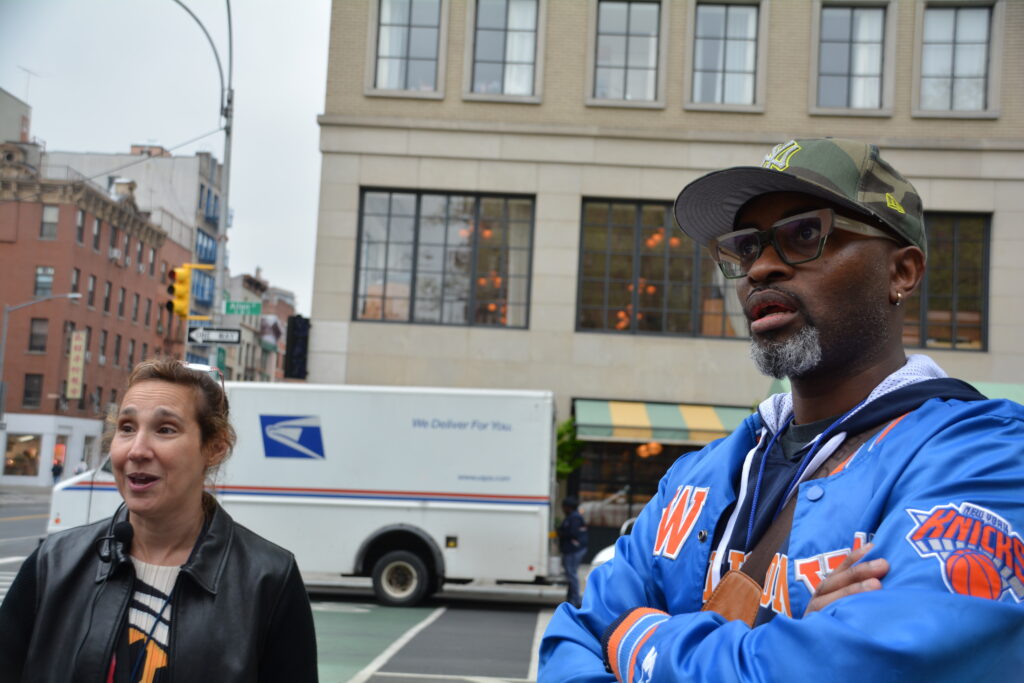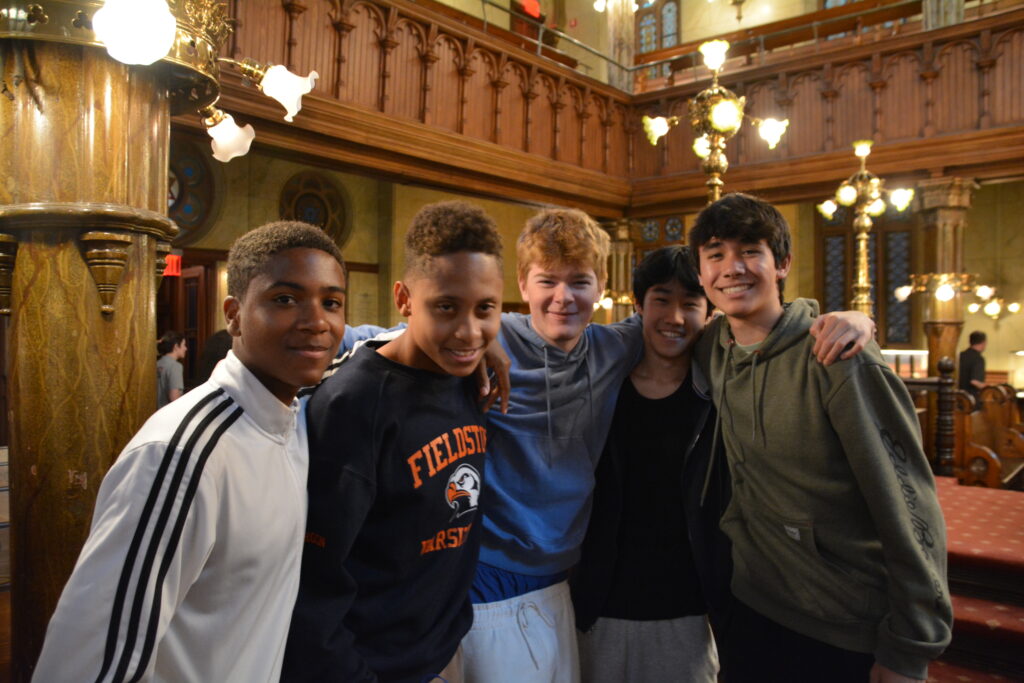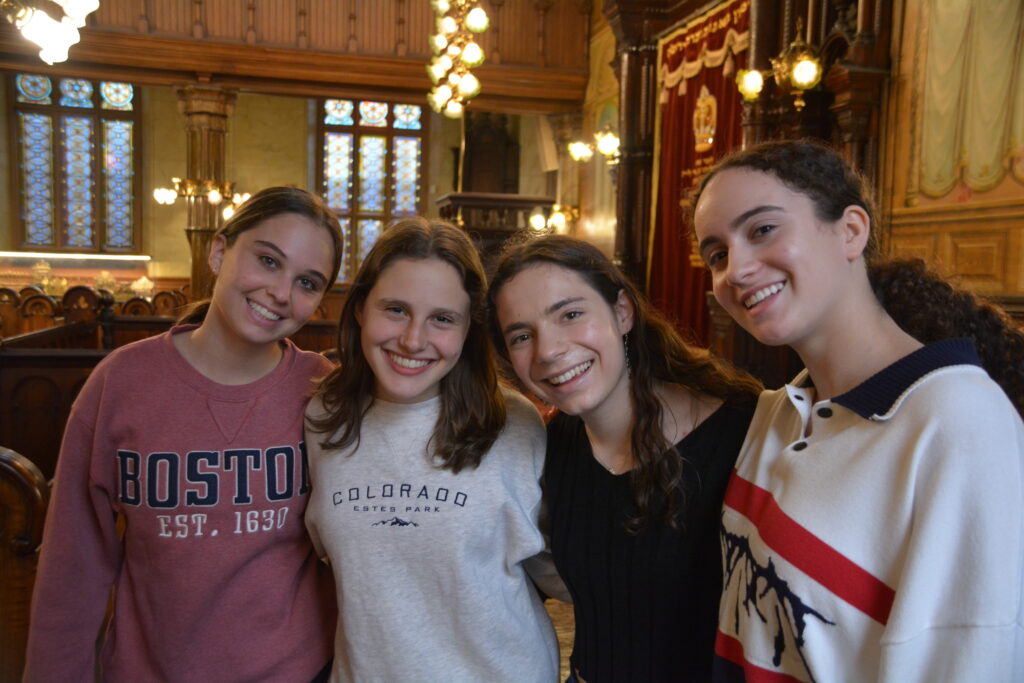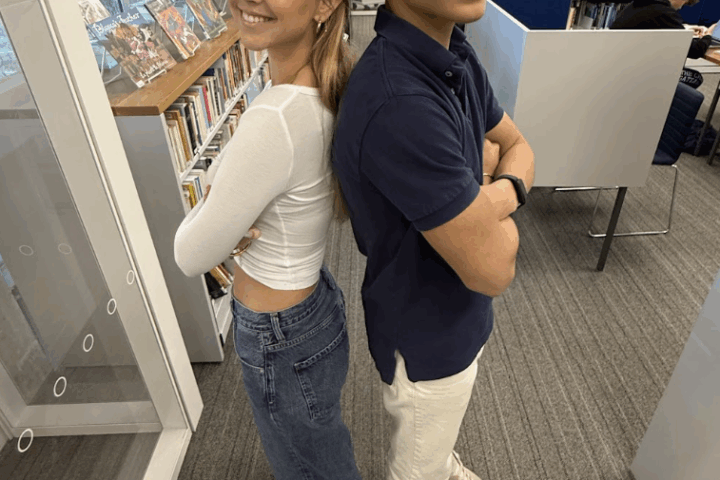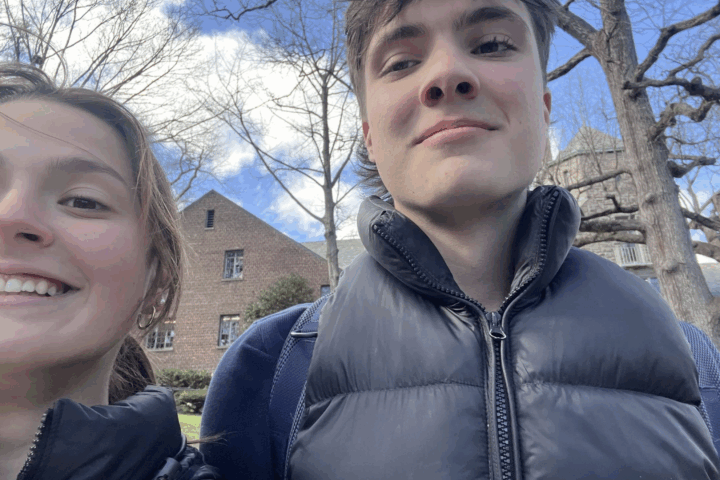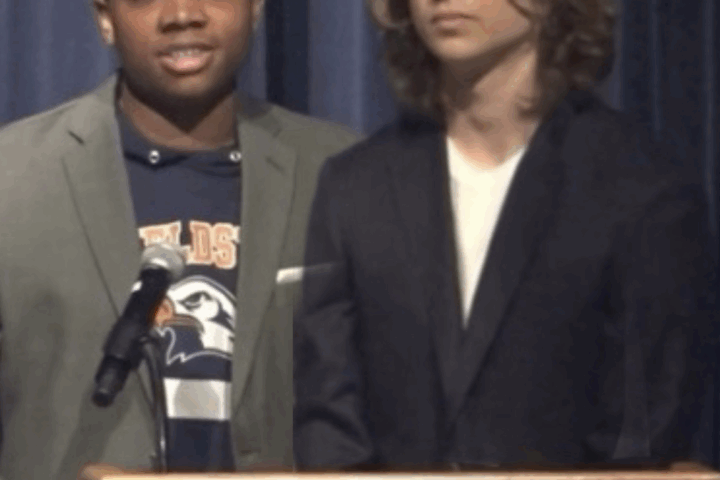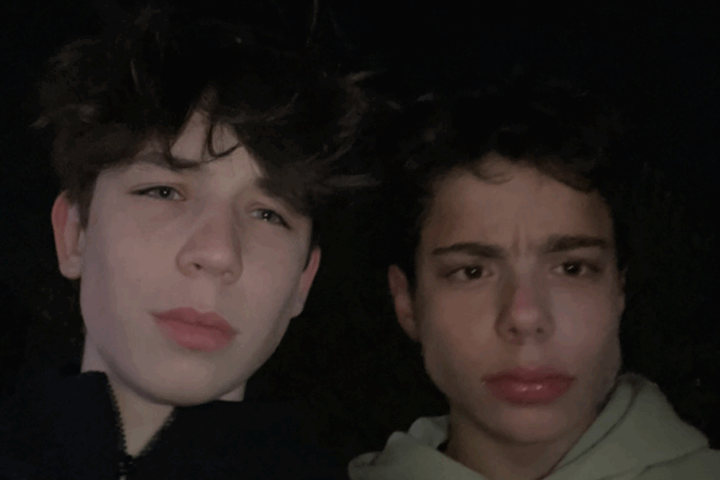The noise from the Stu-Fac could only mean one thing. The Humanities class was in session. Our teachers had just told us that we would be going on a field trip on Monday, April 17th. The class erupted. Millions of questions were asked at the same time. “We’re going where? When? Do I have to wake up early? What about my lacrosse game?” When the rowdy crowd settled down a bit, the trip was explained. Starting at 9:45, we would meet at the Eldridge Street Museum which is located on the lower east side. After the museum, we would do a walking tour of the neighborhood and finish up by 2 pm. The purpose of the trip was to introduce our new unit on Jewish life and immigration in America.
I was the first one to show up, which was surprising considering my usual affliation for being late. The museum is in the heart of Chinatown and I took a minute to look around the neighborhood. Finally, I saw one of my teachers, Ms. Paterson winding her way through the sidewalk toward me. She was wearing a bright white coat and she was hard to miss. We both agreed that it is so rare that we actually see the greatest city in the world, despite living in it. The field trip was already giving us so much exposure to the city. Nearing our time to enter, the stragglers joined the group and we headed inside. Not before taking a quick group photo!

The basement held one of the museum’s temporary exhibits. The exhibit took mezuzahs from all over the world. Mezuzahs have prayers or verses from the Torah in them, and Jews put them in their door frame. A personal favorite was one of a ceramic couple that was given as a wedding gift. I pointed it out to Ms. Paterson and she said, “They must know how to party! “ I cracked up and we all agreed that their wedding must have been a fun one. After a final look at the mezuzahs, Scott led us up to the main floor and to the sanctuary.
Without much further ado, Scott opened the doors and we got our first view of the sanctuary. Everyone slowly walked in with wide eyes, attempting to take everything in all at once. The lighting was majestic. We were transported to another time.
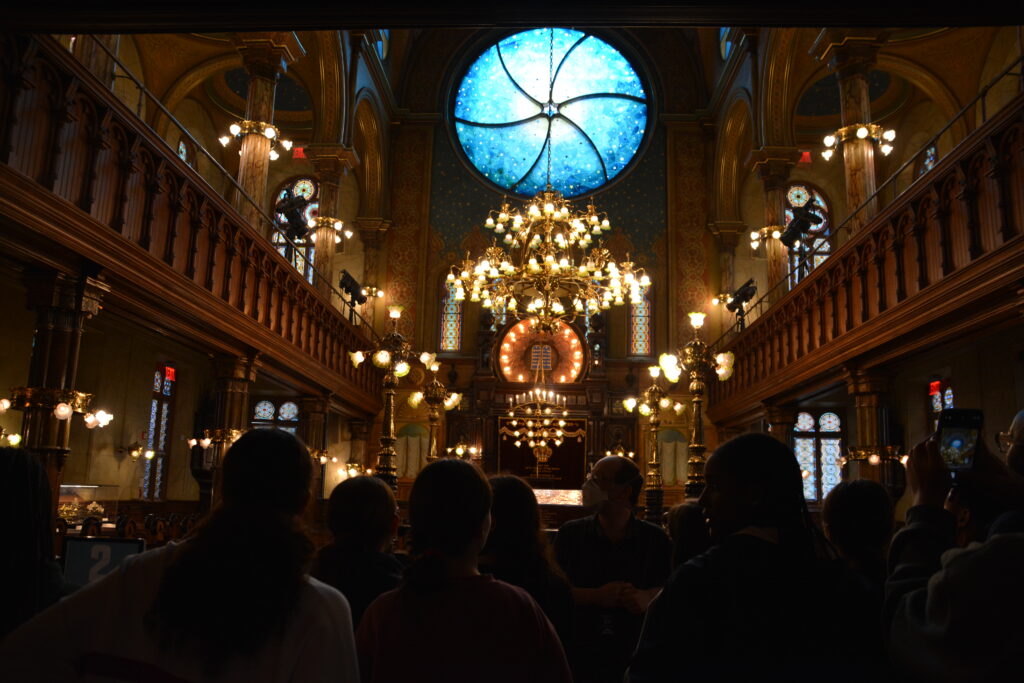
Scott showed us another temporary exhibit the museum was featuring. Menorahs, the candle holder for the Jewish holiday of Hanukkah, from all over the world were on display. Scott walked us by each case and pointed out his favorites including a Christmas tree menorah (ironic I know).
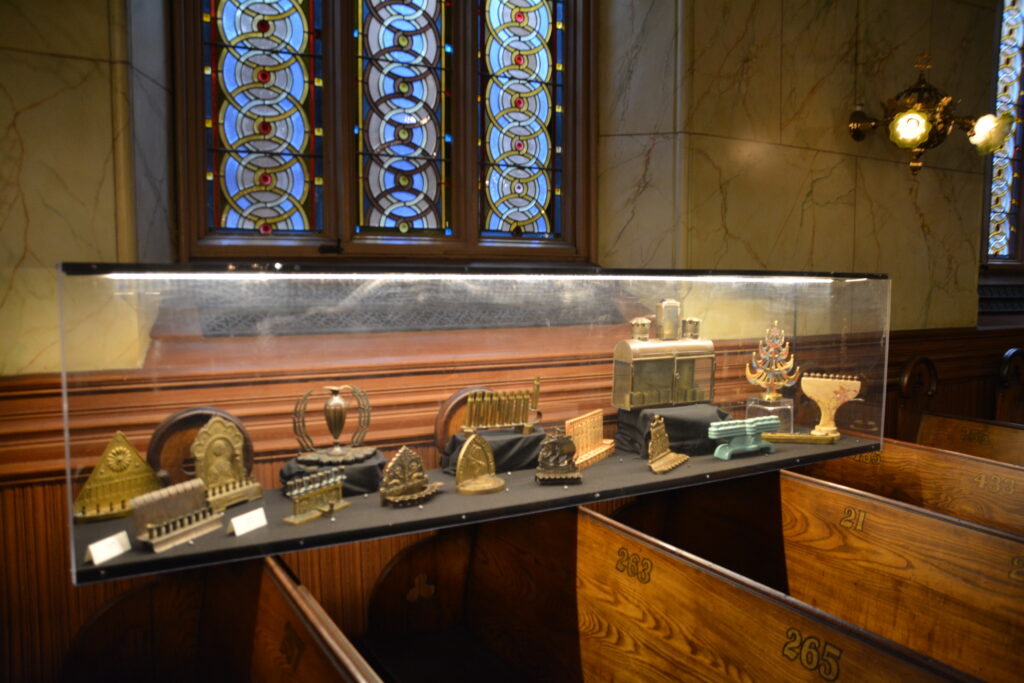
After the menorahs, Scott led us up the stairs where we filed into the front rows of the balcony. Explaining the history of the balcony Scott said, “[the balcony] was where the women and children would sit. The men wanted to be on the ground because it is closer to the ark. On the railing of the balcony they would hang curtains so the women would not distract the men,” That gained some laughs from the audience. Scott continued, “Well the women thought this was preposterous and they tore the curtains down!” After his brief history Scott thanked us profusely for coming and we applauded. Ms. Paterson stood quickly and announced that we needed to be back in an hour and we broke off into groups for lunch!

After lunch, we met outside the synagogue and began our walking tour of the neighborhood. We started at a building behind the synagogue that used to be a bathhouse (mikvah) run by a woman. At one point she began to talk about how women would bathe before and after they began menstruating. Stopping herself she said, “Boys close your ears for this.” Ms. Paterson interrupted, “Absolutely not. Boys open up your ears. You can hear this.” Everyone chuckled and Ms. Paterson continued saying, “You wouldn’t be here without it! So listen up!” At this, everyone burst into laughter. Even the tour guide! “Boy, you guys must be a progressive school,” she said. If only she knew!

We reached our next destination, which was a gorgeous and tall stone building. It seemed very expensive and stuck out like a sore thumb compared to the rest of the neighborhood. Our tour guide explained that this used to be a bank. It was called the Jarmulowsky Bank. The bank was turned into a very expensive hotel. The cost for a room is almost 800 dollars a night! It was shocking to see such a superfluous building that could only be used by those lucky enough to have the costs placed in a neighborhood of lower-income families.
The man who owed the bank had a rival neighbor that was not afraid to call him out. Across the street was another tall building. Our tour guide explained, “This is where the socialist paper was created. The owner purposely built the building this high to make it taller than the bank.” Everyone craned their necks to look up at the buildings. On top of the bank, there was a tall gazebo that seemed very out of place. Our tour guide explained, “The owner of the bank had that built and put on top of the building because of the rivalry. It did make his building taller, but it certainly makes it look a little wonky.”
We made it to the final stop. It was a pickle place! But they didn’t just offer pickles, they pickled everything. Pickled mangoes, pickled pineapples, you name it and they had it! One of the employees was in a Yankee hat and someone said, “Go Yankees!”, to which cheers for the Yankees erupted. Nothing more New York than the Yankees, sorry Mets fans!
One of my classmates was brave enough to try pickled mangoes. We all watched intently as he took his first bite, anticipating him to spit it out. He smiled and said, “Wait, it’s so good!” Proud of him, but I couldn’t work up the courage to try one. After everyone got their pickled-items we said goodbye to the tour guide and Ms. Paterson dismissed us. I couldn’t get over how short, yet jam packed the day had been.
Eve Kaplan (Form IV), is one of my fellow students in humanities. She thought the trip was a perfect representation of what humanities stands for. Post-trip, Eve said, “The field trip was a perfect representation of learning something in a different way and hearing the unheard stories that the class aims to give a voice to.” Her classmate Ariana Sidman (Form IV) couldn’t agree more. Ariana thought that, “Not only was the experience educational, but it furthered my relationship with my peers and allowed me to connect with my teacher in a setting outside of the classroom.” All in all, it was clear the trip was a huge learning experience and a success for the class! Days, when you can go out and experience history firsthand, are priceless. Field trips at Fieldston have often been criticized for their length and, in all honesty, boring experience. More field trips at Fieldston should start to follow in the humanities’ trip footsteps.
*All included photographs by Lily Saal*


